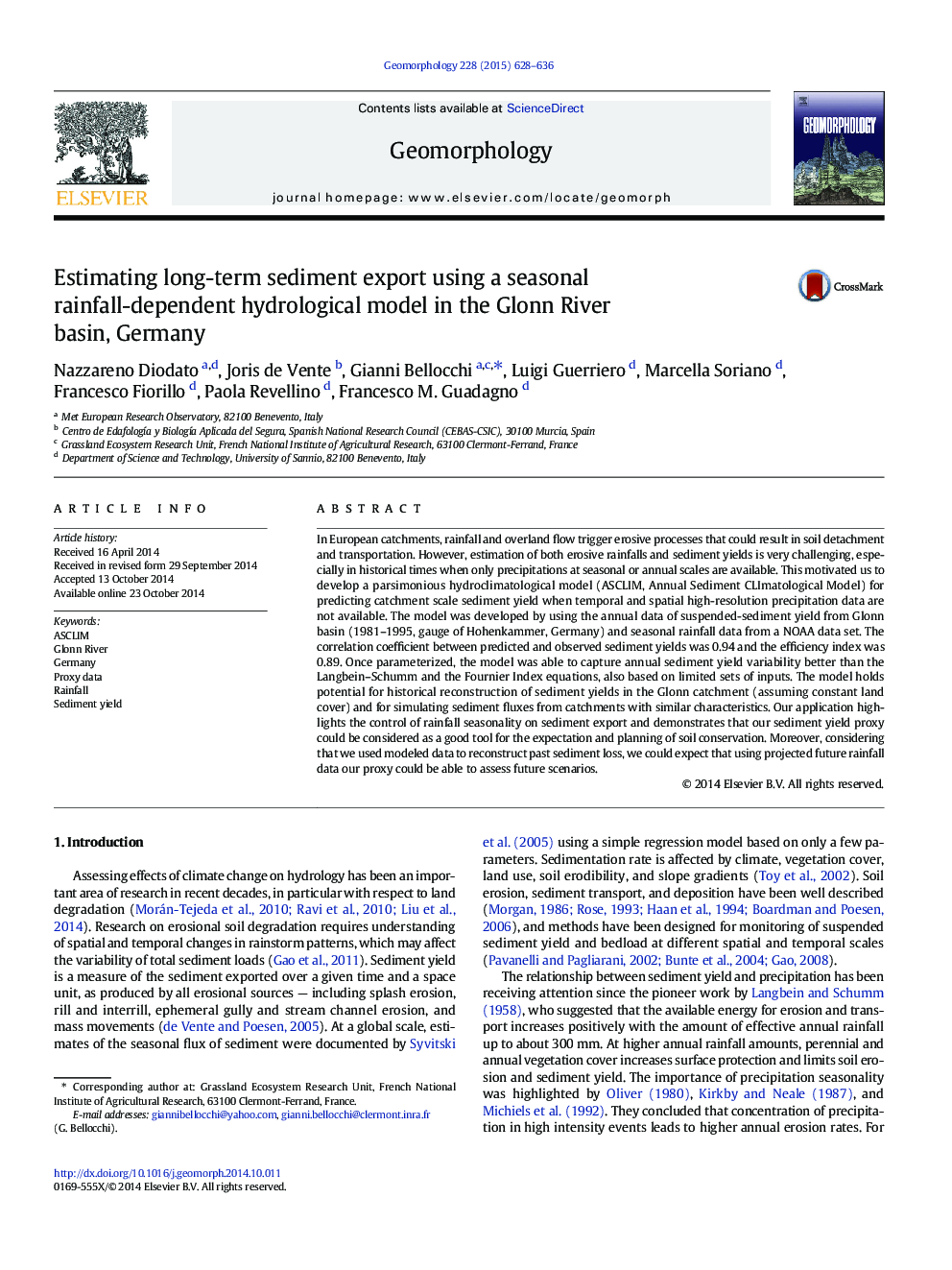| Article ID | Journal | Published Year | Pages | File Type |
|---|---|---|---|---|
| 6432322 | Geomorphology | 2015 | 9 Pages |
â¢A parsimonious model (ASCLIM) predicts annual sediment yield in the Glonn River basin.â¢Model inputs are seasonal precipitation data.â¢ASCLIM captures sediment yield variability better than alternative equations.â¢ASCLIM can be used to reconstruct sediment yields in historical times.
In European catchments, rainfall and overland flow trigger erosive processes that could result in soil detachment and transportation. However, estimation of both erosive rainfalls and sediment yields is very challenging, especially in historical times when only precipitations at seasonal or annual scales are available. This motivated us to develop a parsimonious hydroclimatological model (ASCLIM, Annual Sediment CLImatological Model) for predicting catchment scale sediment yield when temporal and spatial high-resolution precipitation data are not available. The model was developed by using the annual data of suspended-sediment yield from Glonn basin (1981-1995, gauge of Hohenkammer, Germany) and seasonal rainfall data from a NOAA data set. The correlation coefficient between predicted and observed sediment yields was 0.94 and the efficiency index was 0.89. Once parameterized, the model was able to capture annual sediment yield variability better than the Langbein-Schumm and the Fournier Index equations, also based on limited sets of inputs. The model holds potential for historical reconstruction of sediment yields in the Glonn catchment (assuming constant land cover) and for simulating sediment fluxes from catchments with similar characteristics. Our application highlights the control of rainfall seasonality on sediment export and demonstrates that our sediment yield proxy could be considered as a good tool for the expectation and planning of soil conservation. Moreover, considering that we used modeled data to reconstruct past sediment loss, we could expect that using projected future rainfall data our proxy could be able to assess future scenarios.
